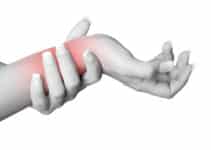Did you know that crystal arthritis affects millions of people worldwide? If you’re seeking answers beyond gout, this article will provide valuable insights.
Discover the various forms of crystal arthritis, common triggers, and how to recognize its symptoms.
Explore the link between crystal arthritis and gout, along with treatment options and lifestyle changes that can help manage this condition.
Get ready to empower yourself with knowledge to serve your health and well-being.
The Various Forms of Crystal Arthritis
Do you know the different forms of crystal arthritis?
Crystal arthritis refers to a group of conditions characterized by the presence of crystal deposits in the joints. The most common form is gout, which occurs when urate crystals accumulate in the joints, causing inflammation and pain. Another type is pseudogout, where calcium pyrophosphate crystals build up in the joints. These crystals can cause sudden episodes of joint pain and swelling, similar to gout. Additionally, there’s hydroxyapatite crystal deposition disease, which occurs when calcium phosphate crystals accumulate in the joints, leading to joint damage and pain.
Crystal arthritis research aims to understand the underlying mechanisms of these conditions and develop innovative treatments. Scientists are investigating ways to prevent crystal formation, dissolve existing crystals, and reduce inflammation. New medications, such as biologics and targeted therapies, are being studied for their effectiveness in managing crystal arthritis. Furthermore, researchers are exploring the potential of regenerative medicine and gene therapy in repairing damaged joints.
Common Triggers of Crystal Arthritis
Knowing the common triggers of crystal arthritis, such as certain foods and alcohol, can help you manage and prevent flare-ups. Crystal arthritis, characterized by the formation of crystals in the joints, can cause severe pain, inflammation, and limited mobility. By identifying and avoiding these triggers, you can take control of your condition and minimize its impact on your daily life.
Certain foods can trigger crystal arthritis flare-ups, especially those high in purines. Purines are naturally occurring substances that are broken down into uric acid in the body. Foods such as red meat, organ meats, shellfish, and beer are known to be high in purines and can increase the risk of flare-ups. It’s important to limit your intake of these foods and opt for healthier alternatives, such as lean meats, low-fat dairy, and plant-based proteins.
Alcohol consumption, particularly beer and spirits, can also contribute to crystal arthritis flare-ups. Alcohol can increase uric acid levels in the body, leading to the formation of crystals in the joints. Limiting your alcohol intake or avoiding it altogether can help prevent flare-ups and improve your overall condition.
In addition to avoiding triggers, alternative therapies can also be beneficial in managing crystal arthritis. These therapies include acupuncture, herbal remedies, and physical therapy. Acupuncture can help alleviate pain and reduce inflammation, while herbal remedies like cherry extract and turmeric have anti-inflammatory properties. Physical therapy can improve joint function and strengthen the surrounding muscles, providing greater support and reducing the risk of flare-ups.
Symptoms and Diagnosis of Crystal Arthritis
If you are experiencing joint pain and swelling, it is important to consult with a healthcare provider for an accurate diagnosis of crystal arthritis. Crystal arthritis, also known as gout, occurs when crystals formed by uric acid build up in the joints, leading to inflammation and discomfort. Identifying the symptoms and receiving a timely diagnosis is crucial in managing the condition effectively.
Here are some common symptoms of crystal arthritis:
| Symptoms | Causes and Risk Factors | Complications and Long Term Effects |
|---|---|---|
| Joint pain | High levels of uric acid | Joint damage |
| Swelling | Diet high in purines | Kidney stones |
| Redness | Obesity | Tophi formation |
If left untreated, crystal arthritis can lead to severe joint damage and the formation of tophi, which are hard nodules that develop around the affected joints. Additionally, high levels of uric acid can cause the formation of kidney stones, posing further health risks.
Consulting with a healthcare provider will not only help diagnose crystal arthritis accurately but also enable you to understand the causes and risk factors associated with the condition. By identifying and managing these factors, you can minimize the risk of complications and long-term effects. Remember, early intervention is key to maintaining joint health and overall well-being.
Understanding the Link Between Crystal Arthritis and Gout
To gain a comprehensive understanding of the link between crystal arthritis and gout, consult with your healthcare provider and explore the latest research on the topic.
Crystal arthritis and gout are both conditions that affect the joints, causing pain, inflammation, and swelling. While gout is more commonly known, crystal arthritis encompasses a broader range of conditions caused by the accumulation of crystals in the joints.
Understanding the pathophysiology of crystal arthritis is crucial in comprehending its link to gout. Crystal arthritis occurs when crystals, such as uric acid or calcium pyrophosphate, form in the joints, leading to inflammation and joint damage. The pathophysiology of crystal arthritis involves the deposition of these crystals, triggering an immune response and causing the characteristic symptoms.
The role of genetics in crystal arthritis is also significant. Certain genetic variations can increase the likelihood of developing crystal arthritis or gout. Understanding these genetic factors can help identify individuals at higher risk and guide treatment and prevention strategies.
By consulting with your healthcare provider and staying informed about the latest research, you can gain a better understanding of the link between crystal arthritis and gout. This knowledge can empower you to make informed decisions about your health and seek appropriate medical care.
Treatment Options for Crystal Arthritis
When it comes to treating crystal arthritis, there are a few options to consider.
Medications, such as nonsteroidal anti-inflammatory drugs (NSAIDs) or colchicine, can help alleviate the pain and inflammation.
Your doctor may also suggest non-pharmacological approaches, such as weight management, lifestyle modifications, and physical therapy, to help manage the symptoms and prevent future flare-ups.
Medication and Dosages
You should consult your doctor about the appropriate medication and dosages for treating crystal arthritis. They’ll consider your specific condition and medical history to determine the best course of treatment. Here are some key points to consider when discussing medication and dosages with your doctor:
- Side Effects: Your doctor will explain the potential side effects of each medication. It’s important to understand these risks and discuss any concerns you may have.
- Effectiveness: Your doctor will discuss the effectiveness of different medications in treating crystal arthritis. They’ll consider factors such as the severity of your symptoms and the presence of any underlying conditions.
- Dosage: Your doctor will prescribe the appropriate dosage based on your individual needs. It’s important to follow their instructions carefully and not to adjust the dosage without consulting them first.
- Alternative Therapies: In addition to medication, your doctor may discuss alternative therapies such as physical therapy, acupuncture, or dietary changes. These can complement your treatment and help manage symptoms.
Non-Pharmacological Approaches
Sometimes, incorporating non-pharmacological approaches like physical therapy or dietary changes can be beneficial in managing crystal arthritis symptoms. If you’re looking for alternative therapies to complement your medication, there are several options to explore.
Mindfulness techniques can help you cope with the pain and stress associated with crystal arthritis. By practicing mindfulness, you can learn to focus on the present moment, reducing anxiety and improving your overall well-being.
Additionally, alternative therapies such as acupuncture, yoga, and massage therapy have been found to provide relief for some individuals with crystal arthritis. These therapies can help improve joint mobility, reduce inflammation, and promote relaxation.
It’s important to discuss these options with your healthcare provider to determine the best approach for you. Remember, incorporating non-pharmacological approaches alongside your medication can enhance your overall treatment plan and improve your quality of life.
Lifestyle Changes to Manage Crystal Arthritis
To manage crystal arthritis, you can make some lifestyle changes that can help alleviate symptoms and improve your overall well-being.
One important change is modifying your diet by reducing the intake of foods high in purines, such as red meat and alcohol, and increasing your consumption of fruits, vegetables, and whole grains.
Additionally, incorporating regular exercise and physical therapy into your routine can help strengthen your joints, reduce pain, and improve mobility.
Dietary Modifications for Arthritis
Cutting back on processed foods and increasing your intake of anti-inflammatory foods can help alleviate arthritis symptoms. Here are four dietary modifications you can make to manage arthritis:
- Focus on whole foods: Incorporate fresh fruits, vegetables, whole grains, lean proteins, and healthy fats into your diet. These nutrient-rich foods can help reduce inflammation and provide essential vitamins and minerals.
- Limit processed foods: Processed foods often contain additives, preservatives, and unhealthy fats that can worsen inflammation. Opt for homemade meals and snacks made from scratch to have better control over the ingredients you consume.
- Consider dietary restrictions: Some individuals with arthritis find relief by avoiding certain foods like gluten, dairy, or nightshade vegetables. Experiment with eliminating these foods to see if it helps alleviate your symptoms.
- Explore alternative therapies: In addition to dietary changes, alternative therapies like acupuncture, massage, and herbal supplements may offer additional relief. Consult with a healthcare professional to determine which therapies may be suitable for you.
Exercise and Physical Therapy
Are you incorporating exercise and physical therapy into your lifestyle changes for managing crystal arthritis? If not, you might be missing out on some significant benefits.
Exercise has been proven to alleviate pain, reduce inflammation, and improve joint mobility in individuals with crystal arthritis. By engaging in regular physical activity, you can strengthen the muscles surrounding your joints, which helps to provide them with more support and stability.
Additionally, physiotherapy techniques such as stretching, range of motion exercises, and manual therapy can also play a crucial role in managing crystal arthritis symptoms. These techniques can help to improve joint flexibility, reduce stiffness, and enhance overall physical function.
Frequently Asked Questions
Can Crystal Arthritis Be Cured Completely?
Crystal arthritis, including gout, can be managed with various treatment options, such as medication and lifestyle changes. While there is no known cure, natural remedies for crystal arthritis can help alleviate symptoms and improve your overall well-being.
What Are the Long-Term Complications of Crystal Arthritis?
Crystal arthritis can have chronic implications, impacting your life in the long term. However, with proper management strategies, you can minimize complications and improve your quality of life.
Is Crystal Arthritis More Common in Men or Women?
Crystal arthritis prevalence and risk factors vary for men and women. Factors such as age, obesity, and certain medical conditions can increase your risk. Consult a healthcare professional for personalized advice.
Are There Any Dietary Changes That Can Help Manage Crystal Arthritis?
To manage crystal arthritis, try making dietary changes. Incorporate nutritional interventions and lifestyle modifications. These can help alleviate symptoms and improve overall well-being. Take charge of your health and make positive choices today.
Can Crystal Arthritis Affect Other Joints Besides the Ones Mentioned in the Article?
Crystal arthritis can affect other joints besides the ones mentioned in the article. It can impact your mobility and limit your ability to perform daily activities. Treatment options can help manage the symptoms and improve your quality of life.






